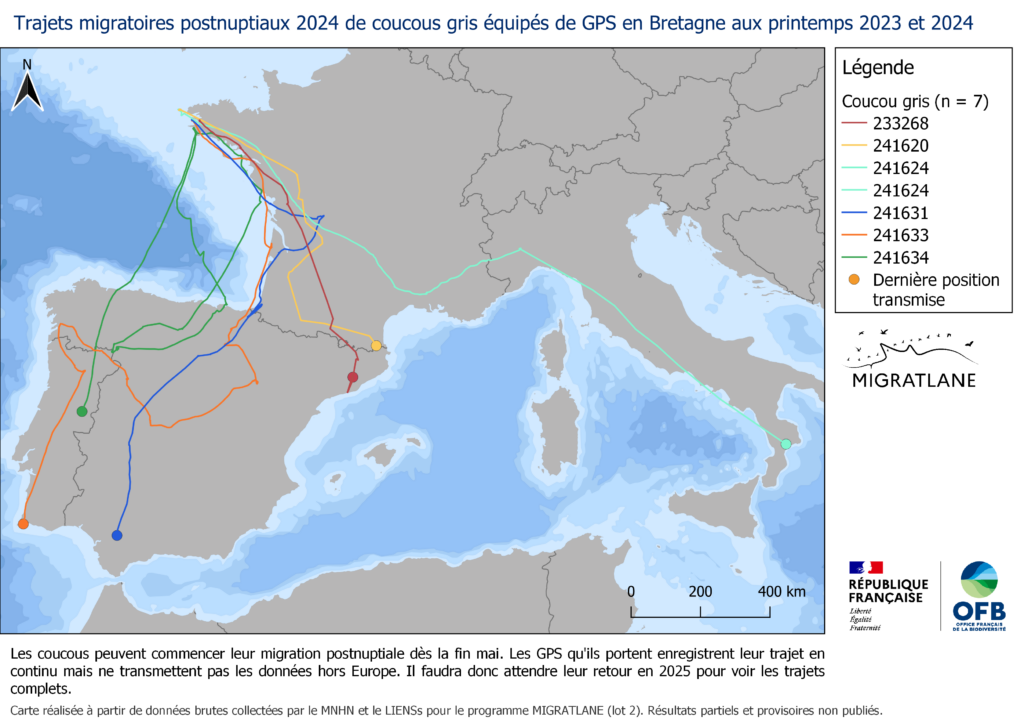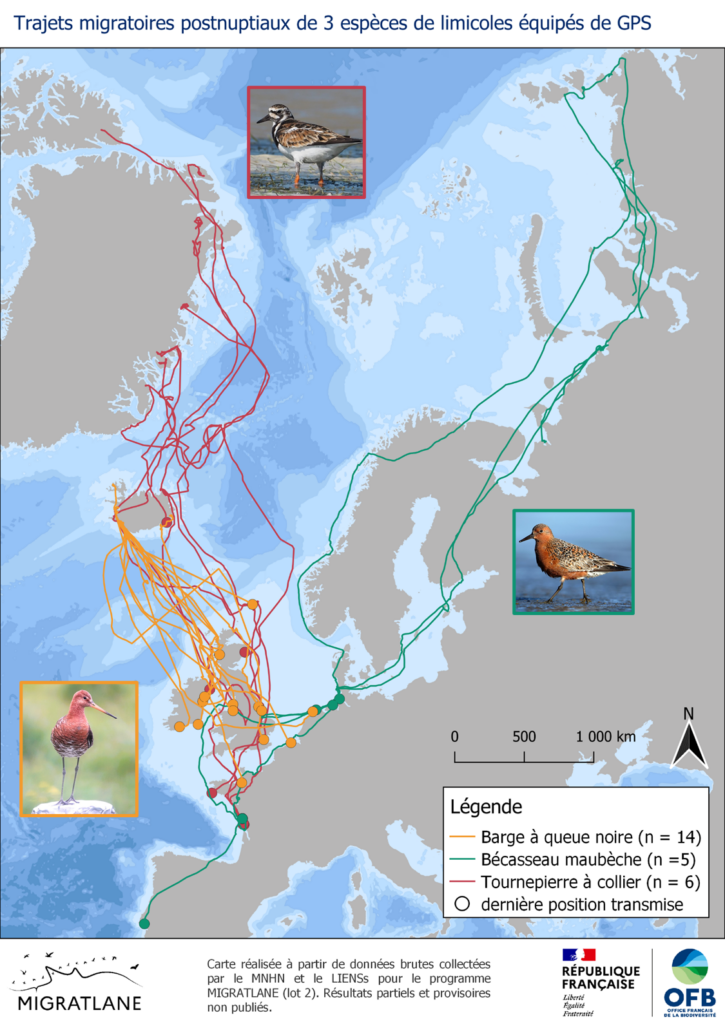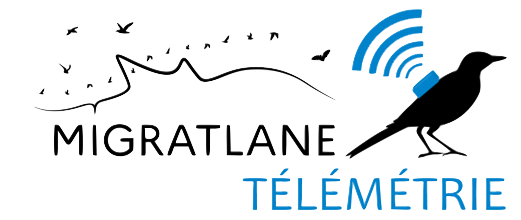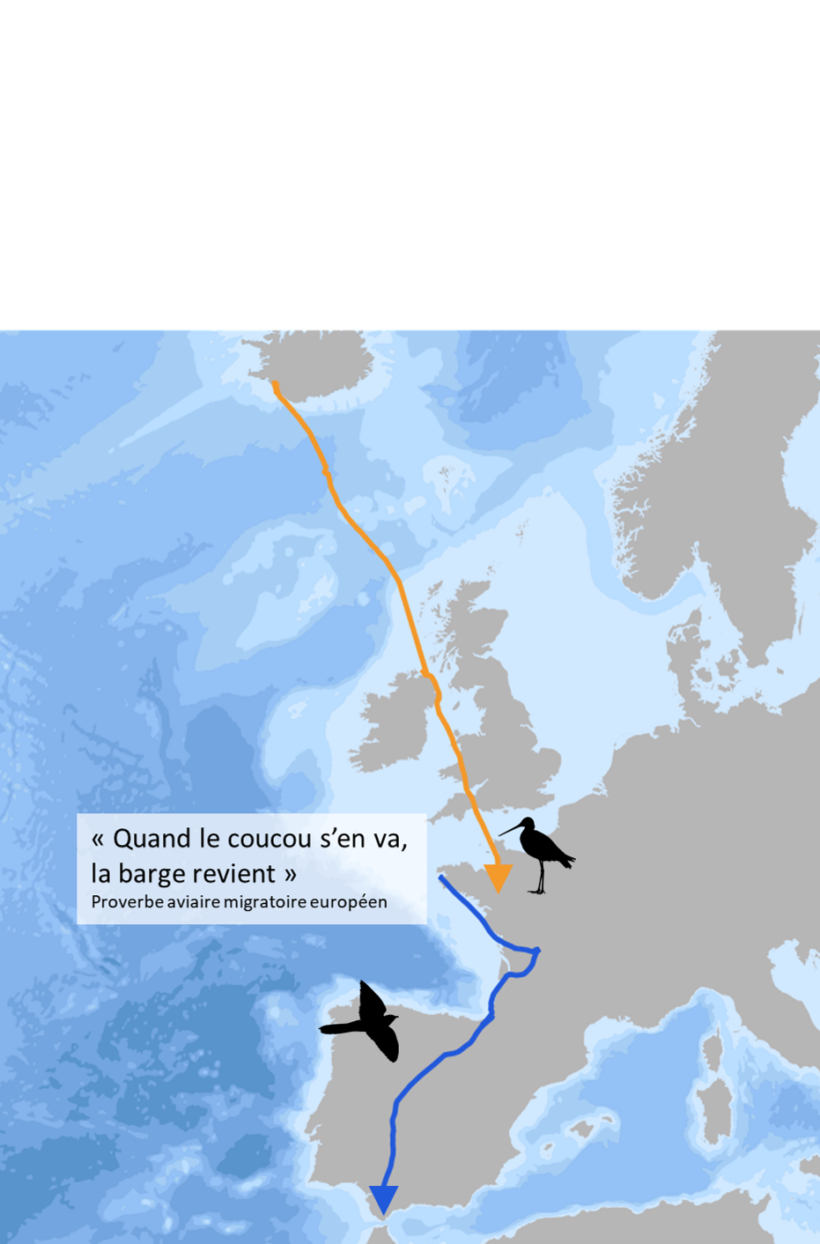With summer comes the departure of some and the return of others!
Those who are leaving
Since the end of May, the cuckoos have been gradually deserting their breeding sites and have begun their migration southwards. Some made a long stopover in Spain, perhaps to buy a castle? Another preferred to holiday in Italy (light blue on the map). Finally, the cuckoo at Kergalan (Finistère) realised on reaching the Portuguese border that he had forgotten his passport… so he went back to Kergalan to get it and then flew straight back to Portugal (dark green on the map). GPS no longer transmit outside Europe, so we’ll have to wait until spring 2025 for the cuckoos to cross back the Straits of Gibraltar again, to see their complete migration (the 2nd recorded for some).

Those returning
The waders wintering or passing through France, on the other hand, are already back with us, returning to the temperate regions of Western Europe. Some have already reached French shores, others have stopped over in the United Kingdom or on the Wadden Sea (Netherlands, Denmark), but all have come back from far, far away: from Greenland, Iceland or even central Siberia! Like this red knot, which in 3 weeks travelled more than 5,300km between the islands of Northern Earth in the Taimyr region (northern Russia) and its staging site in the Wadden Sea, where it arrived on 11 August. On the same day, a turnstone returned from East Greenland and landed in the same place it had left in early May after being captured and fitted with a GPS, in Saint Guénolé, Finistère. And again on 11 August, a final cuckoo began its crossing of the Mediterranean.

And to think they do this every year! These birds are breaking records that we can’t get enough of! The MIGRATLANE Telemetry team will now be analysing these data in more detail, in particular to determine the flight heights of migratory birds along the French coastline and, more generally, along the coasts of Europe.

